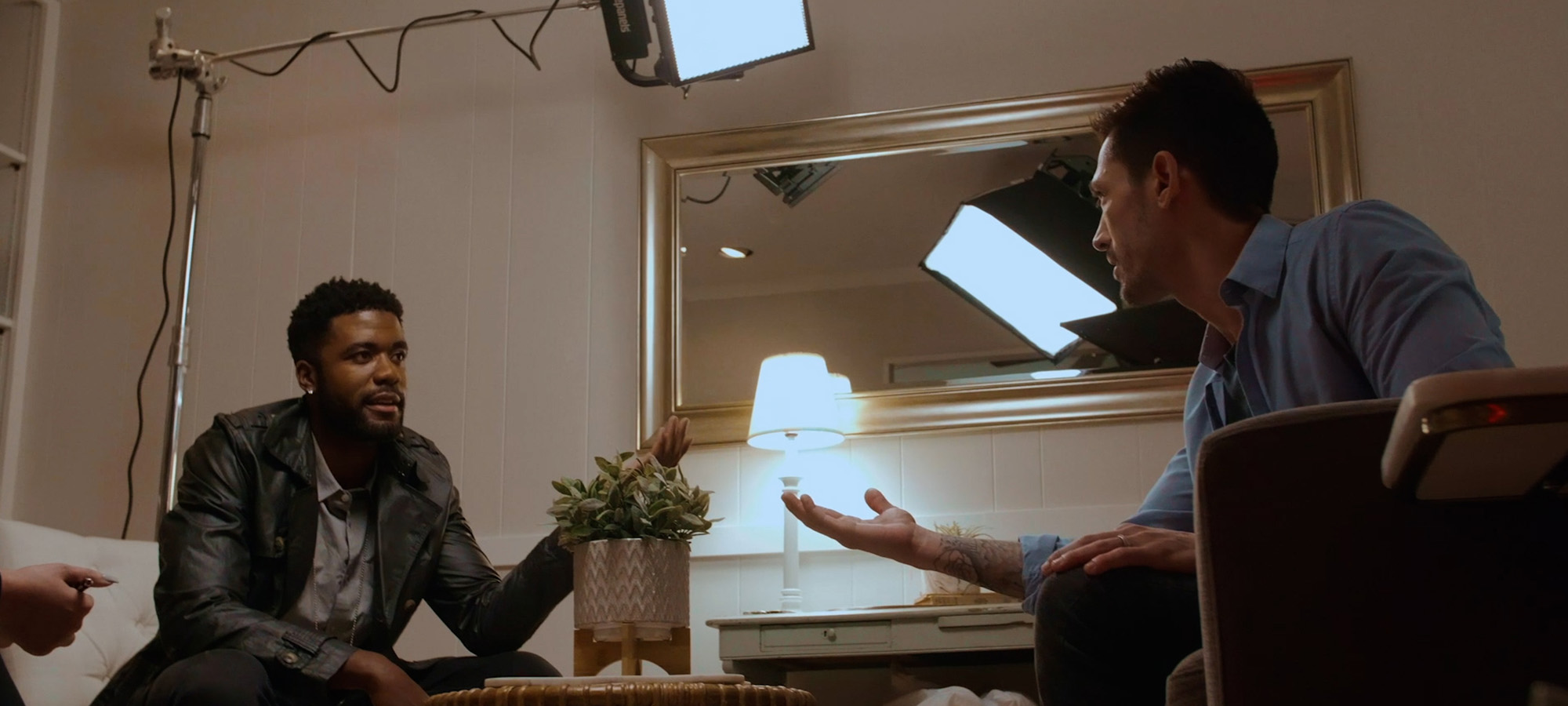Written by Garrett Sammons
In the world of film production, lighting plays a critical role in shaping the mood, tone, and overall aesthetics of a scene. A well-designed lighting setup can significantly enhance the narrative and evoke the intended emotional response from the audience. In this blog post, I want to share my creative process for how to light a dialogue scene. I’ll walk you through the techniques I used, the factors I considered, and how Gemini fixtures contributed to the overall look and feel of the scene.
The Scene: An Intense Interrogation Sequence
The scene in question is an intense interrogation sequence, where detectives are trying to extract crucial information from a distressed husband regarding his missing wife. I wanted to create a high contrast, dramatic atmosphere, inspired by the works of David Fincher. To achieve the desired look, I employed a combination of source lights, practical lights, and studio lights. The main objective was to create a believable yet visually striking setup that would evoke the intended emotional response from the audience. So, let’s dive right into the specifics of this lighting setup.
Key Lighting: Establishing Character Focus
For our main characters, I used two separate key lights. First, I set up a 1×1 Soft light with a 40-degree grid for the husband on the left side of the scene. This tight beam angle ensured the light illuminated only the husband’s face, without spilling onto the two detectives. The second key light, a 2×1 light fixture, was placed overhead to illuminate the other two characters – the detective and their partner. To control the spill and direction of this light, I used a flag to prevent it from casting light onto the husband’s face.
When talking about key lighting, it’s essential to discuss the importance of filming on the shadow side of your subject’s face. This technique, known as “short lighting” or “narrow lighting,” refers to positioning the camera so that the side of the subject’s face with more shadows is facing the lens. This approach is particularly effective in creating a sense of depth, dimension, and drama in a scene, as it emphasizes the contrast between the illuminated and shadowed areas of the face.
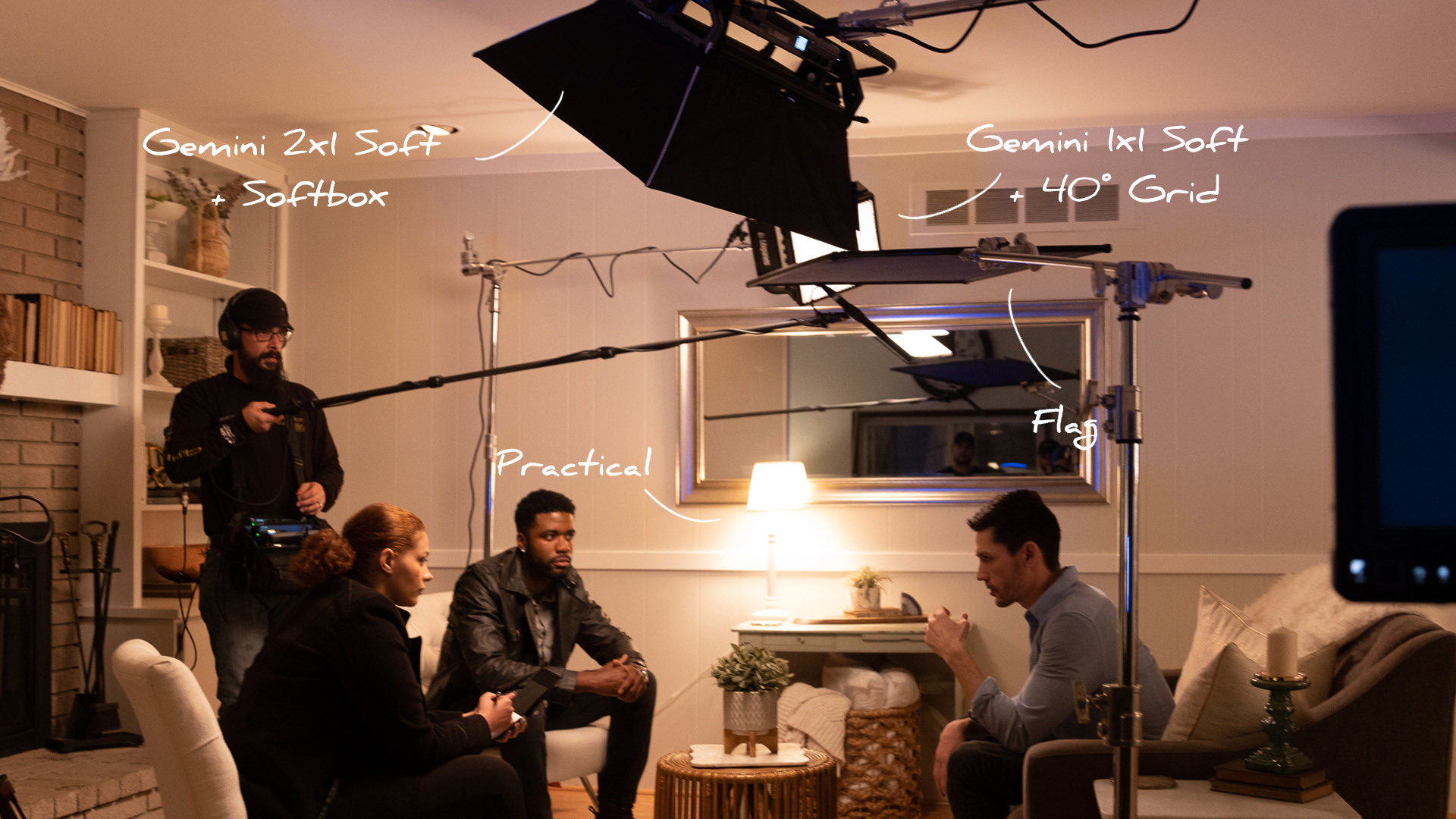
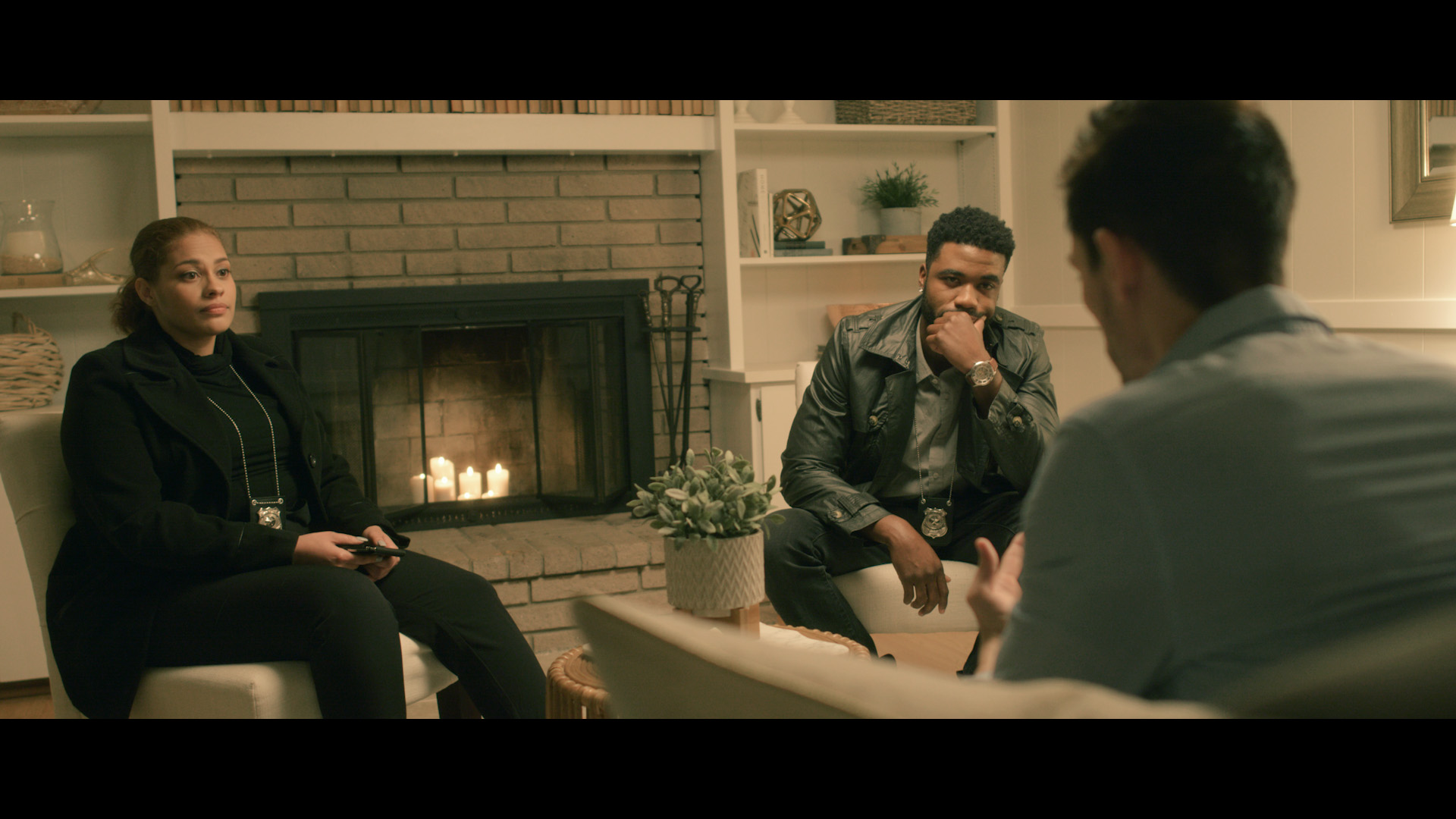
Filming on the shadow side enhances the visual intrigue of a scene, drawing the viewer’s attention to the subject’s emotional expressions and making the lighting more dynamic. This method is a common practice in cinematic lighting, as it helps create a sense of mystery and moodiness that complements the story being told. By capturing the shadow side of the subjects’ faces in our intense interrogation scene, we were able to heighten the tension and suspense, contributing to the overall dramatic atmosphere. In conjunction with the precise control offered by advanced light fixtures, short lighting played a crucial role in crafting a visually captivating and emotionally resonant scene.
Practical Lighting: Adding Depth and Believability
Practical lights are the ones visible within the scene, and they play a crucial role in adding depth and believability to the lighting setup. In this scene, I utilized various practical lights, including a table lamp and candles in the fireplace. The table lamp was strategically placed to create the illusion that it was the primary light source, even though its output wasn’t enough to illuminate the entire scene. We call this motivated light.
Motivated lighting is a technique used to enhance the realism and believability of a scene by ensuring that the lighting appears to be originating from practical sources within the setting itself. This is crucial in maintaining the audience’s immersion in the story, as it provides a plausible explanation for the presence of light, preventing any jarring inconsistencies that might distract viewers or break the suspension of disbelief.
The key is to ensure that these practical sources are complemented by additional, off-screen lights that mimic the same color temperature, direction, and quality of light as the on-screen source. This helps create the illusion that the practical lights are the primary source of illumination, even if their output might be insufficient to light the entire scene effectively.
In the case of our interrogation scene, the use of motivated lighting – the table lamp and candles – helped establish a believable and immersive atmosphere. By carefully matching the color temperature and intensity of the light fixtures to the practical sources, we were able to create a seamless and visually striking lighting design that contributed to the dramatic tension and emotional resonance of the scene.
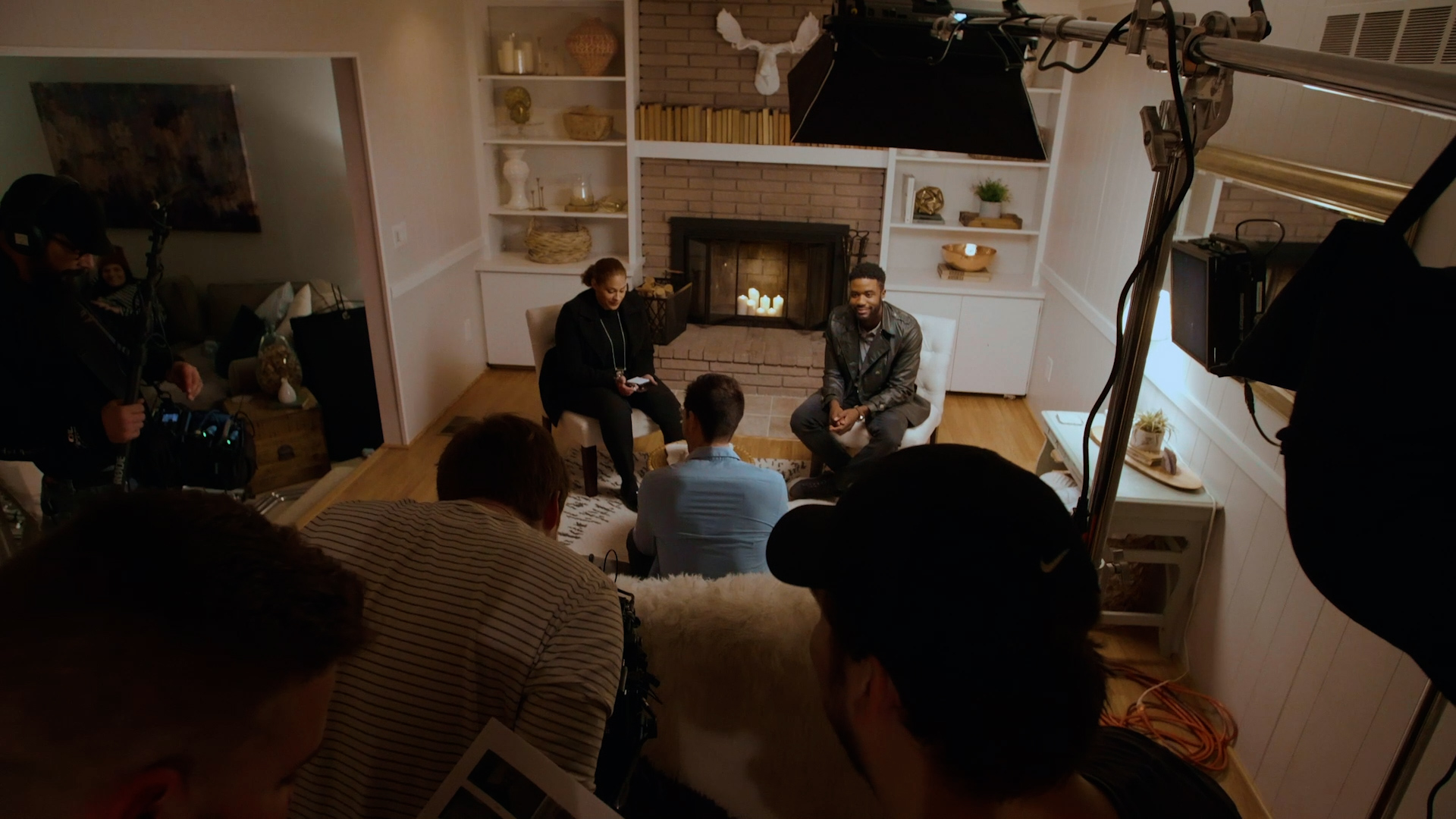
Color Accuracy and Flexibility
One of the key benefits of using advanced light fixtures is their incredible color accuracy. These fixtures often feature an impressive range of color temperature settings, spanning from 2,700 to 10,000 Kelvin values, as well as green to magenta adjustments. This level of control over color temperature and tint allowed me to fine-tune the lighting to match or complement the color of practical lights and the overall color palette of the scene. As a result, the integration of advanced fixtures with practical lights and other sources becomes seamless, ensuring that the final image has a cohesive and harmonious appearance.
The flexibility of these fixtures extends beyond color accuracy to include various operational modes, such as CCT (Correlated Color Temperature) mode, HSI (Hue, Saturation, Intensity) mode, Gels, and various preset effects.
Adding Subtle Tension with a Cop Car Light Gag
It’s important to highlight how subtle lighting effects can have a profound impact on the atmosphere and tension within a scene. In our interrogation sequence, the inclusion of a faint, strobing cop car light effect added an additional layer of urgency and unease to the scene, heightening the overall emotional impact on the audience.
I placed a 1×1 fixture in a separate room, far away from the main scene. By adjusting the light intensity to around 15% and programming the fixture to the built-in Emergency effect, I was able to simulate the presence of a police car just outside the house. This created an indirect, pulsating light that subtly illuminated the scene, adding an underlying tension without overtly drawing the viewer’s attention.
The key to successfully incorporating a lighting gag like this lies in its subtlety. Overdoing the effect could potentially distract the audience or detract from the scene’s primary focus: the interaction between the characters. By carefully balancing the intensity and distance of the advanced fixture, I ensured that the cop car light gag enhanced the atmosphere without being too conspicuous.
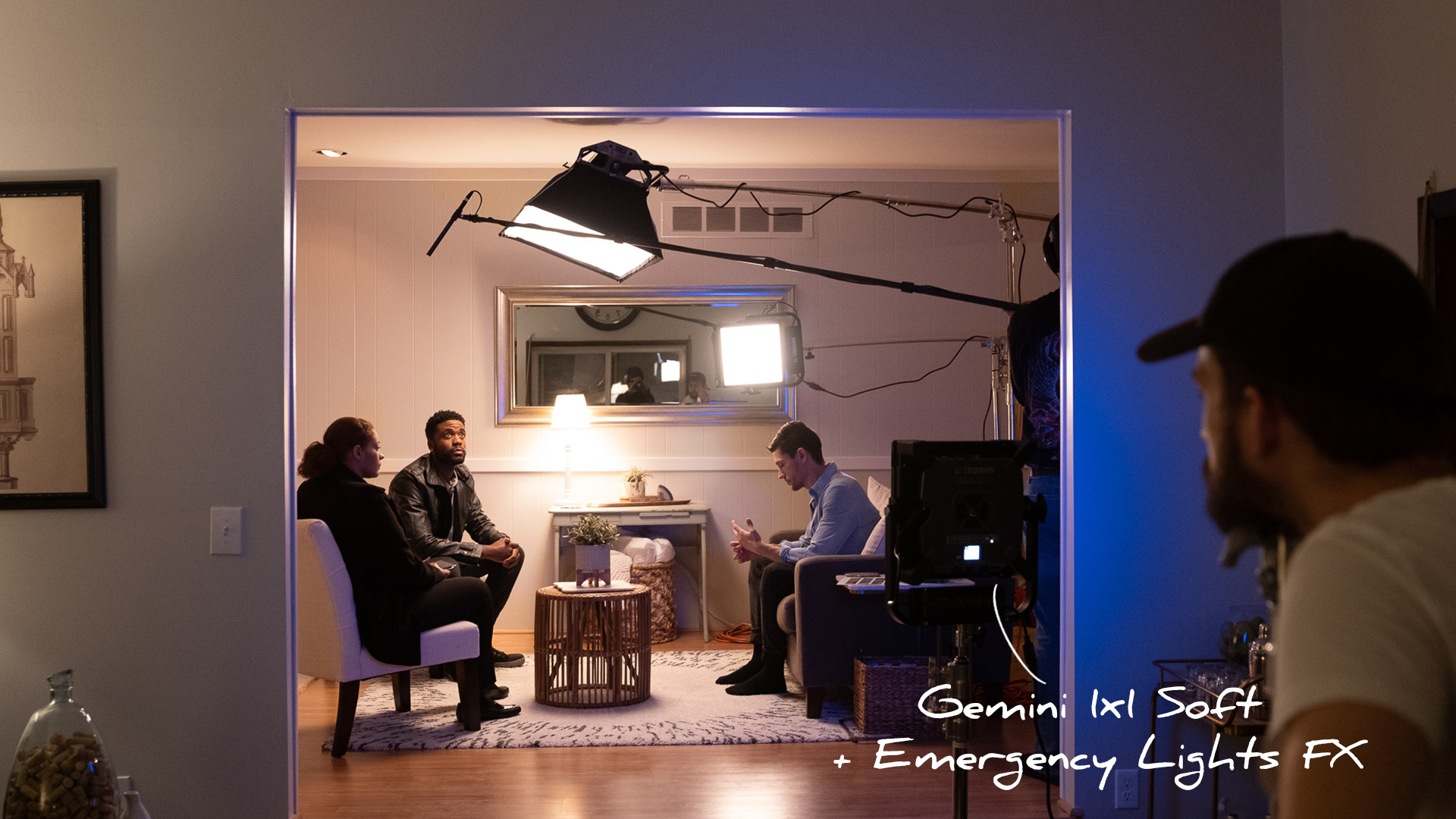
By understanding the importance of each lighting element and utilizing the capabilities of the lights, I was able to create a visually striking and immersive interrogation scene. The combination of key lights, practical lights, and carefully controlled color temperature and intensity contributed to a cohesive and captivating result.
So, the next time you’re tasked with designing the lighting for a film production scene, remember to consider the various aspects of lighting and how they can work together to enhance the narrative. Versatile fixtures can offer precision, control, and flexibility that can elevate your scene and make a significant impact on the overall atmosphere, mood, and emotional resonance of your film.
As you plan your next film production, keep in mind the importance of combining various lighting elements, such as key lighting, practical lighting, and motivated lighting. By carefully considering the color temperature, intensity, and subtlety of your lighting choices, you can create a visually striking and emotionally engaging scene that captivates your audience and enhances the storytelling.
With a well-crafted lighting design, you can not only convey the intended atmosphere and emotion of your scene but also contribute to the overall cinematic experience. Remember that lighting is a powerful tool in a filmmaker’s arsenal, and by harnessing the capabilities of advanced lighting fixtures, you can create a truly memorable and impactful film.
How to Light a Dialogue Scene Livestream
If you missed our livestream where we covered this topic in detail, you can catch up below.
